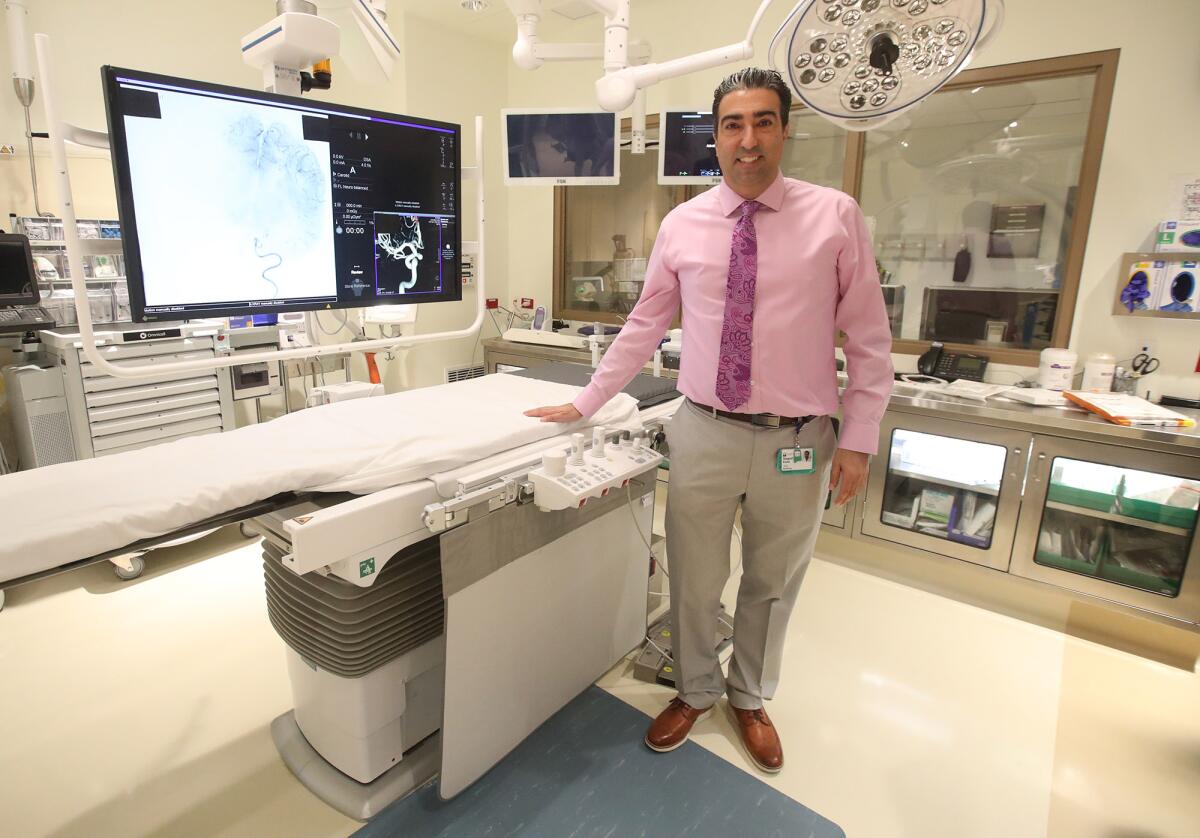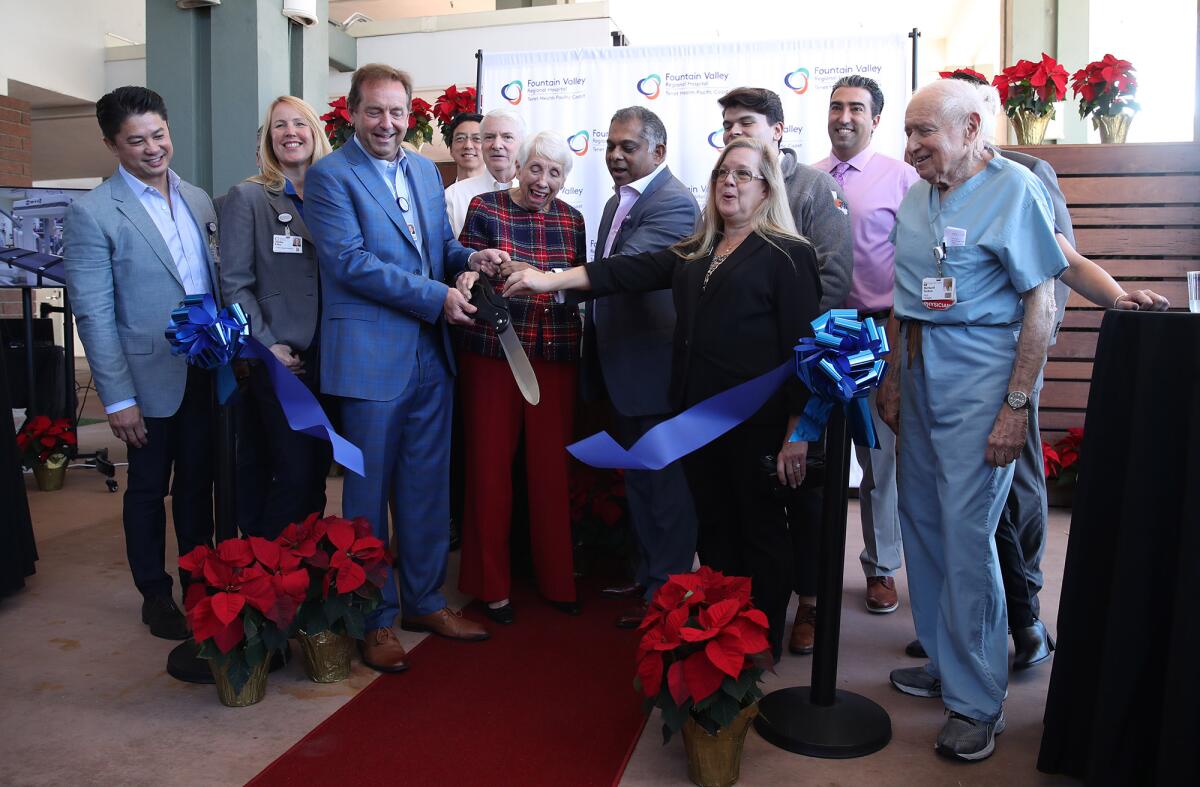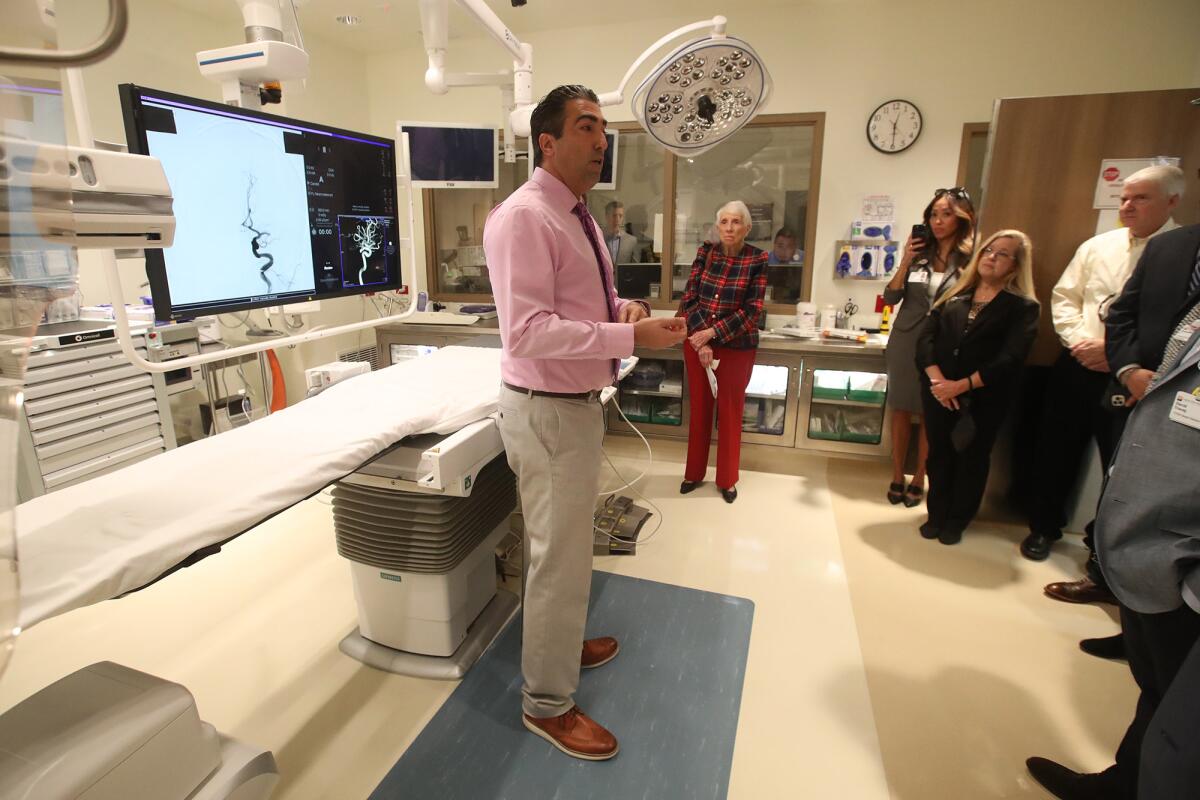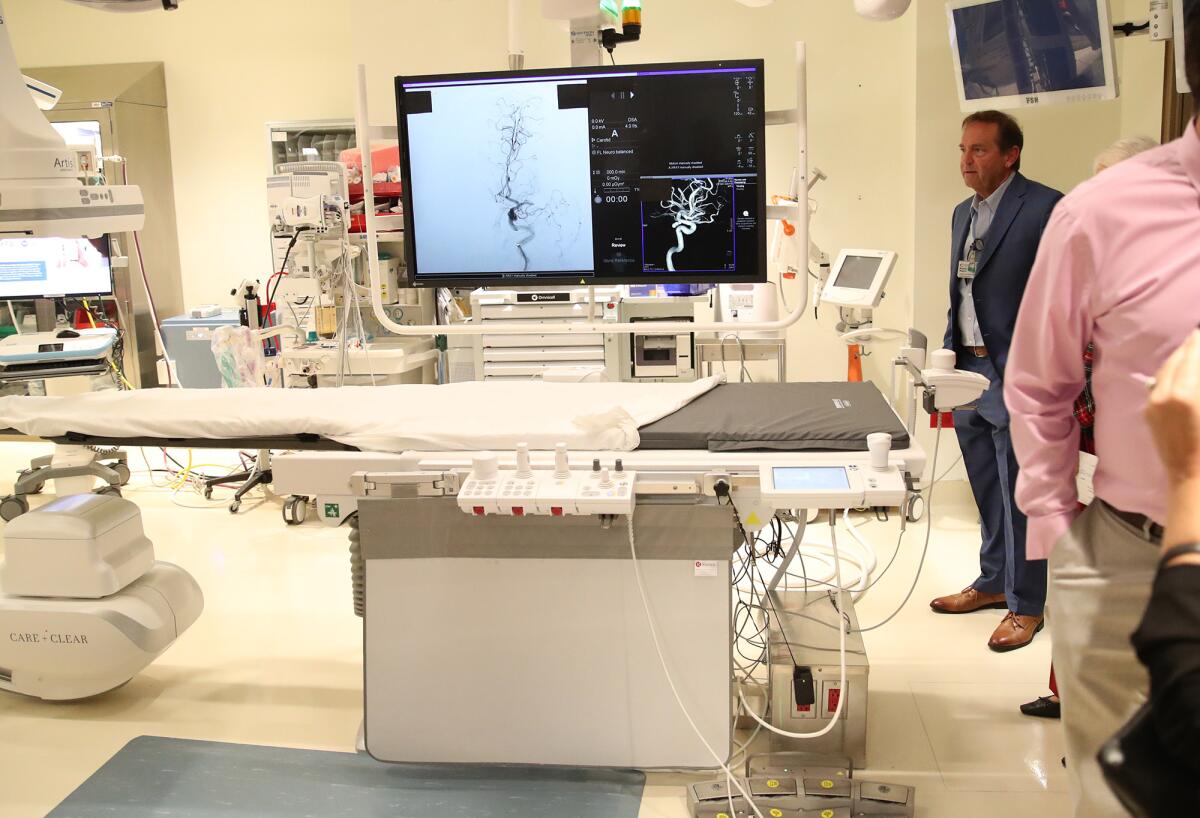Fountain Valley Regional Hospital unveils its new $3-million angiography suite

- Share via
Excitement around the latest technological advancement at Fountain Valley Regional Hospital was palpable Tuesday, as the local medical facility unveiled its new neurointerventional angiography suite.
Hospital staff showed off new medical imaging equipment. A biplane angiography system, manufactured by Siemens Healthineers, assists physicians in performing surgical procedures in a manner that is less invasive, they explained.
Randy Rogers, the chief executive for Fountain Valley Regional Hospital, said the new suite cost between $3 million and $3.5 million.
Dr. Hamed Farid said the biplane room is being utilized for neurointerventional work. He demonstrated the detailed imaging of the system in a brief presentation for hospital staff and dignitaries on Tuesday.
“Interventional radiology is from the neck down,” Farid said. “It’s low-risk procedures. Neurointervention is from the neck up, and these are very high-risk procedures, usually, very little room for error. If something wrong was to happen, it can be devastating for the patient.”

Farid spoke to the importance of precision when operating in and around the brain, comparing the curvature of the blood vessels within to navigating Lombard Street in San Francisco, famous for its hairpin turns.
The device provides physicians access to live fluoroscopy on two planes at the same time, which allows for the faster maneuvering of catheters into the brain. Farid added that the radiation exposure for the patient is reduced significantly.
“You are able to view two different projections at the same time, so literally as we’re going up with the wire and the catheter, you’re able to go back and forth in the projections and know exactly where your catheter is, be able to maneuver the wire around and position catheters to the exact location needed,” Farid said. “When you’re looking at 1- to 2-millimeter structures in the brain and maneuvering wires through those things from the patient’s groin or wrist, that precision is pretty important. Having the biplane room not only reduces the radiation exposure to the patient but also the contrast dosage.”

Dr. Reginald Abraham, the chief of staff at Fountain Valley Regional, celebrated the milestone as an opportunity to get more patients back to their families.
“Now, we have this ability to be able to detect and treat strokes to do what’s really important,” Abraham said. “This is important, but what is really important is for all of us to get back to what we do every day, which is be with our families, grow, love and have a wonderful time with the growth of our young ones, and also our elderly people.”
Rogers called the biplane technology “just another tool in the toolbox.” During Tuesday’s ribbon-cutting ceremony he broke into an anecdote he had heard from a physician about how the equipment had already been put to use.

“We’ve got multiple cath labs and radiology labs in various stages of updating, and so we had a patient that came in and they identified a lesion,” Rogers said. “They were coming back to get their interventional procedure, and they moved from the old lab to the new lab, and with the new visualization and technology that comes with the Siemens biplane, they were able to not only properly do the intervention on this lesion, but they found another hidden lesion.”
On what was the final day of her first term as mayor of Fountain Valley, Kim Constantine remarked that the new medical capabilities at the hospital will be a boon to residents.
“Giving the people of Fountain Valley access to state-of-the-art technology for less invasive surgeries and faster healing is truly a gift starting this holiday season,” Constantine said. “I really appreciate your continued support and for always being here to serve our community. I am thrilled this hospital continues to invest in our collective health and works to bring the best care possible to the people of Fountain Valley.”

All the latest on Orange County from Orange County.
Get our free TimesOC newsletter.
You may occasionally receive promotional content from the Daily Pilot.










